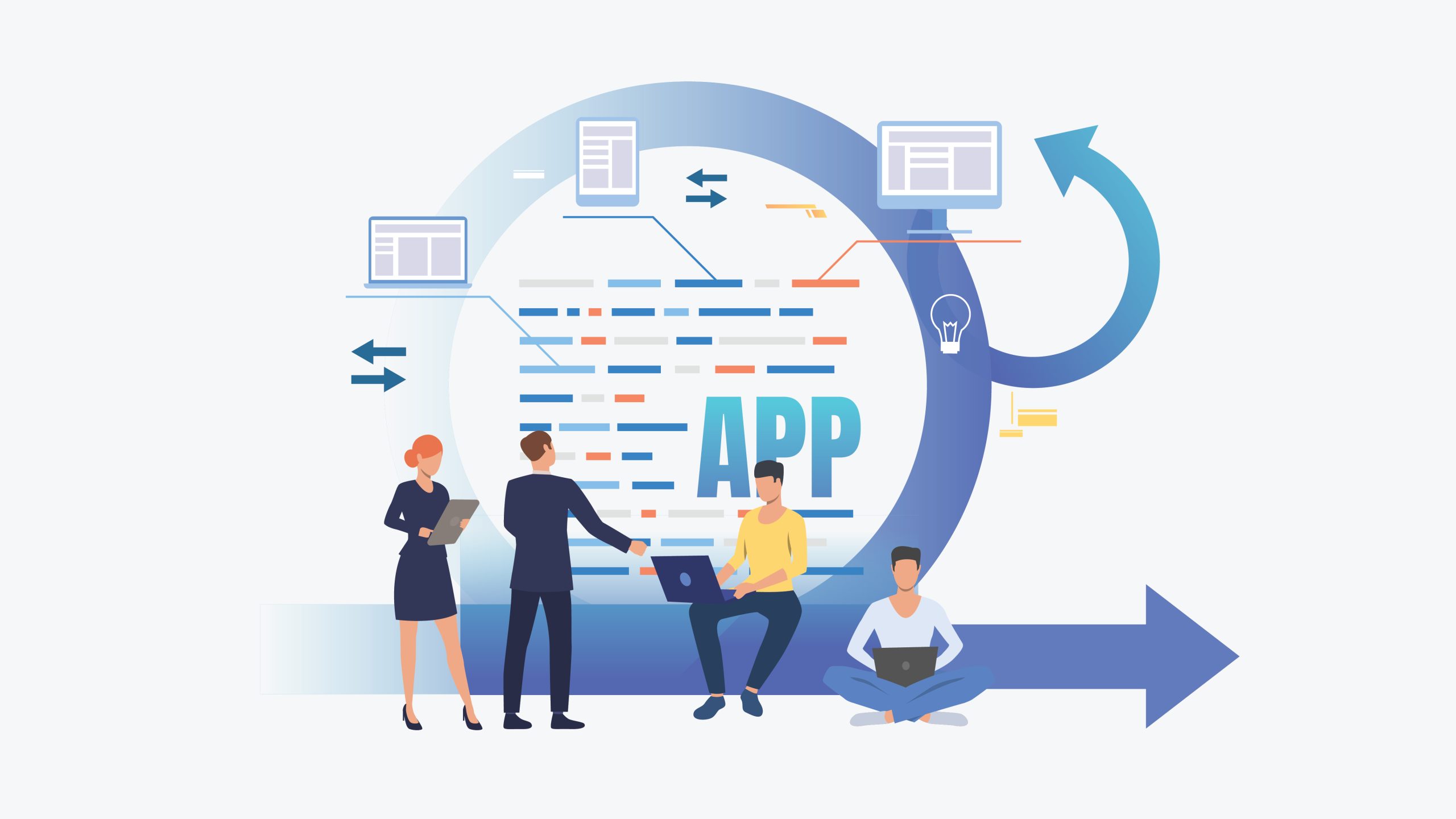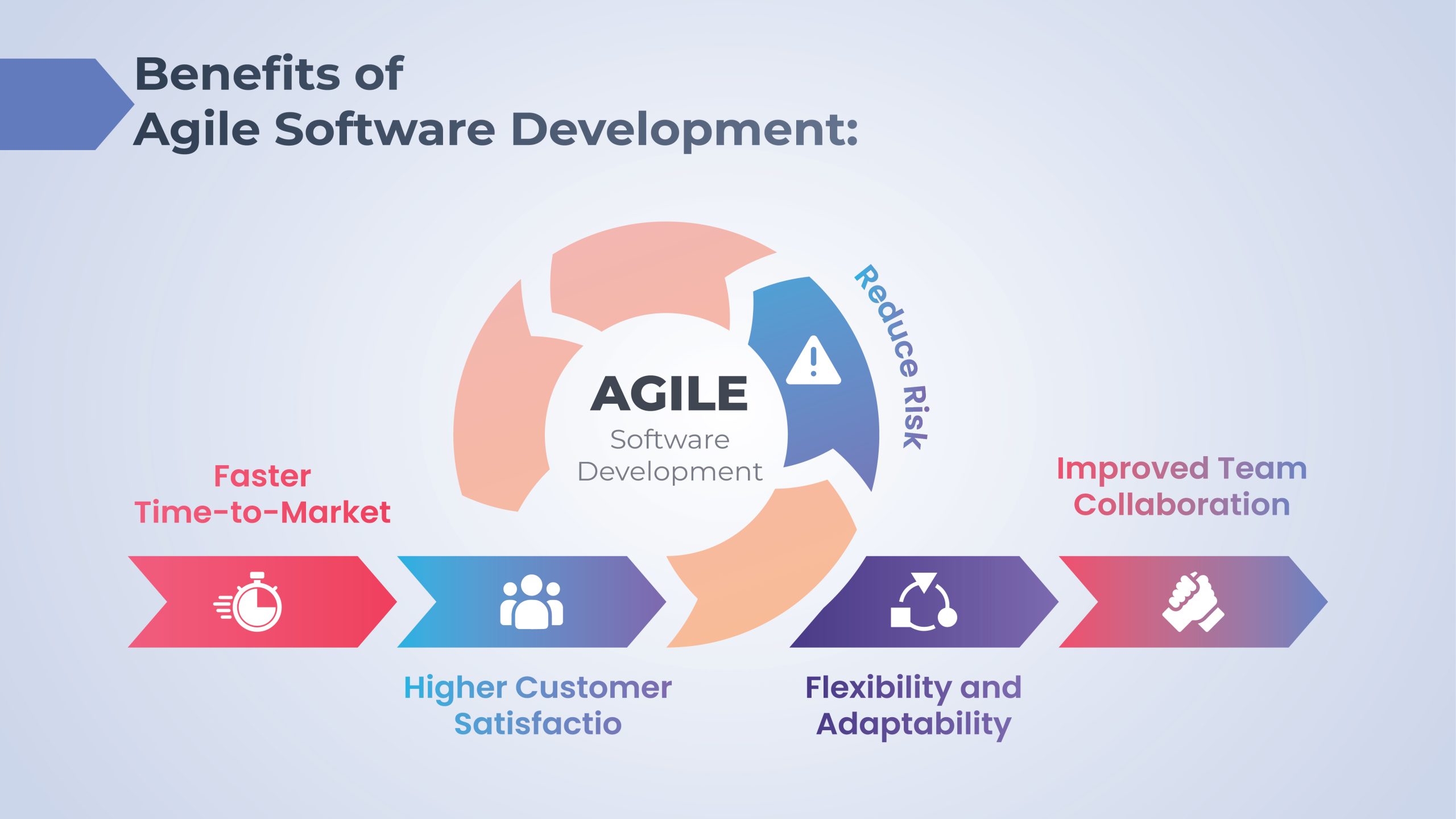From Vision to Reality: The Role of Agile in App Projects
From Vision to Reality: The Role of Agile in App Projects
In the ever-evolving digital landscape, the demand for cutting-edge applications has grown exponentially. To stay ahead of the competition, businesses are embracing Agile Application Development – a revolutionary approach that empowers them to adapt, innovate, and thrive. In this exciting journey of creating customer-centric solutions, Black Widow Tech, the leading software development company in the USA, emerges as the ultimate partner, driving growth and success for businesses worldwide.

What is Agile Application Development?
Agile Application Development is a dynamic and iterative process emphasizing collaboration, flexibility, and customer feedback to deliver exceptional software products. Unlike traditional methods, Agile embraces change and allows businesses to respond quickly to market demands, ensuring a seamless alignment between development teams and stakeholders.
Agile Software Development Process
The Agile Software Development Process is a flexible and collaborative approach to creating software solutions. Unlike traditional, linear development methodologies, Agile emphasizes adaptability, customer feedback, and incremental progress. The process is centered around small, iterative cycles called “sprints,” where development teams work on specific features or functionalities.
Key Principles of Agile Software Development Process:
- Customer-Centric Approach: Customers and stakeholders are actively involved throughout the development process. Their feedback is continuously gathered and incorporated, ensuring the final product meets their needs and expectations.
- Iterative Development: Rather than attempting to build the entire software at once, Agile breaks the project into manageable chunks. Each iteration, or sprint, focuses on a specific set of features, which are then reviewed and improved upon in subsequent sprints.
- Continuous Integration and Testing: Agile encourages frequent integration of code into a shared repository. Automated testing is an integral part of the process, ensuring that changes don’t introduce errors and maintaining the stability of the application.
- Empowered Teams: Agile promotes self-organizing and cross-functional development teams. Team members collaborate closely, making collective decisions and sharing knowledge to foster innovation and creativity.
- Embracing Change: Agile recognizes that requirements can change throughout the development process. It allows for flexibility, accommodating changes in priorities or new insights without disrupting the entire project.
Stages in the Agile Software Development Process:
- Backlog Creation: The development team collaborates with stakeholders to create a prioritized backlog of features and user stories. Each item on the backlog represents a small, specific piece of functionality.
- Sprint Planning: Before each sprint, the team selects the highest-priority items from the backlog to work on. They estimate the effort required and set achievable goals for the sprint.
- Development: During the sprint, the team designs, codes, and tests the selected features. The emphasis is on producing a potentially shippable increment of the software by the end of the sprint.
- Daily Standups: Daily meetings, or standups, are held to keep the team updated on progress, discuss any obstacles, and plan the day’s tasks. These short meetings foster transparency and collaboration.
- Sprint Review: At the end of each sprint, the team demonstrates the completed work to stakeholders, gathering feedback and insights for future iterations.
- Sprint Retrospective: The team holds a retrospective meeting to discuss what went well, what could be improved, and how to enhance the development process in the next sprint.

- Faster Time-to-Market: Agile’s iterative nature allows for quicker delivery of working software, enabling businesses to respond promptly to changing market demands.
- Higher Customer Satisfaction: By involving customers throughout the process and delivering features incrementally, Agile ensures the final product aligns closely with user needs.
- Reduced Risks: Constant testing and customer feedback help identify issues early, reducing the likelihood of costly errors in the final product.
- Flexibility and Adaptability: Agile accommodates changing requirements, allowing businesses to pivot and stay competitive in dynamic markets.
- Improved Team Collaboration: The Agile approach promotes teamwork, communication, and a shared sense of responsibility, leading to a more engaged and productive development team.
In conclusion, the Agile Software Development Process revolutionizes the way software is built, fostering collaboration, adaptability, and customer satisfaction. By embracing Agile methodologies, businesses can create innovative and high-quality software solutions while staying ahead in the rapidly evolving tech landscape.
Why Use Agile?
Using Agile offers numerous benefits for individuals, teams, and organizations involved in software development and other project-based endeavors. Here are some compelling reasons why you should consider using Agile:
- Customer-Centric Approach: Agile places a strong emphasis on understanding and satisfying customer needs. Continuous customer involvement and feedback throughout the development process ensure that the end product aligns closely with customer expectations, resulting in higher customer satisfaction.
- Flexibility and Adaptability: Agile methodologies embrace change rather than resisting it. This allows for the incorporation of new insights, shifting requirements, and emerging market trends during development, enabling you to respond quickly to evolving circumstances.
- Faster Time-to-Market: Agile’s iterative nature, with frequent delivery of working increments, enables you to get essential features and functionalities in the hands of users sooner. This quicker time-to-market can give you a competitive advantage and allow you to gain valuable user feedback early in the process.
- Transparency and Collaboration: Agile practices promote open communication and collaboration among team members, stakeholders, and customers. Regular meetings, such as daily stand-ups and sprint reviews, foster a transparent work environment, enabling everyone to stay informed about progress and challenges.
- Improved Product Quality: Agile’s continuous testing and integration help identify and address issues early in the development process. This proactive approach leads to higher product quality, reducing the likelihood of costly errors and ensuring a more reliable end product.
- Empowered and Engaged Teams: Agile methodologies empower development teams to make decisions and take ownership of their work. This autonomy fosters a sense of ownership and engagement, leading to increased motivation and productivity.
- Risk Mitigation: Frequent iterations and feedback loops in Agile development allow for the early identification and mitigation of project risks. It reduces the likelihood of project failure or the need for extensive rework.
- Stakeholder Involvement: Agile actively involves stakeholders throughout the development process, allowing them to see the progress and provide feedback regularly. It fosters a sense of ownership and promotes a shared understanding of project goals.
- Continuous Improvement: Agile encourages a culture of continuous improvement. After each iteration, the team reflects on what went well and what could be improved, leading to ongoing optimization of the development process.
- Applicability to Various Projects: Agile is not limited to software development. Its principles can be adapted and applied to various project types, including marketing campaigns, content creation, and business initiatives.
In summary, using Agile methodologies can lead to enhanced customer satisfaction, faster delivery, improved collaboration, and higher-quality products. Its adaptability and focus on customer needs make it a compelling choice for teams and organizations seeking a more responsive and efficient approach to project management and development.
Agile Methodology Frameworks
Agile Methodology is a flexible and adaptable approach to software development that encompasses several frameworks. Each framework offers a unique set of practices and guidelines for implementing Agile principles effectively. Here are some of the most popular Agile Methodology frameworks:
- Scrum: One of the most popular Agile frameworks is Scrum. It divides development into fixed-length “sprints,” which are typically two to four weeks long. A Product Owner, Scrum Master, and members of the development team make up a Scrum team. Daily stand-up meetings are organized to talk about accomplishments and difficulties. A potentially shippable increment of the product is delivered after each sprint.
- Kanban: Kanban is a visual Agile framework that focuses on continuous delivery and efficiency. It uses a Kanban board to visualize the workflow, with each task represented as a card moving through various stages of development. The emphasis is on limiting work in progress and ensuring a steady flow from start to finish.
- Lean Software Development: Lean manufacturing practices serve as an inspiration for lean software development. It emphasizes minimizing waste and increasing consumer value. Its main goals are to provide value to customers as soon as feasible, cut out pointless tasks, and promote ongoing development.
- Extreme Programming (XP): Extreme Programming is an Agile framework that emphasizes technical excellence and continuous feedback. It promotes practices like test-driven development, pair programming, continuous integration, and frequent releases. XP aims to improve software quality and responsiveness to changing requirements.
- Dynamic Systems Development Method (DSDM): DSDM is an Agile framework that provides a set of principles and practices for project management and development. It emphasizes active user involvement, frequent delivery of products, and the importance of delivering on time and within budget.
- Feature-Driven Development (FDD): FDD is an Agile framework that focuses on incremental feature delivery. It uses short, time-boxed iterations to deliver specific features. FDD places significant emphasis on domain modeling and feature design.
- Crystal: Crystal is a family of Agile methodologies that come in different variants based on project size and complexity. It is designed to be lightweight and adaptable, with a focus on people and team interactions. Crystal promotes early delivery and frequent communication.
- Scaled Agile Framework (SAFe): SAFe is an Agile framework specifically designed for scaling Agile practices to larger organizations. It provides a set of guidelines for managing alignment, collaboration, and delivery across multiple teams, ensuring they work cohesively toward common goals.
- Disciplined Agile (DA): Disciplined Agile is a hybrid Agile framework that combines practices from various Agile approaches, including Scrum, Kanban, XP, and Lean. DA provides a toolkit of process options, allowing organizations to tailor Agile practices to their specific needs.
Each Agile framework has its strengths and is suitable for different project types and team dynamics. Organizations often select a framework or customize a hybrid approach based on their unique requirements and the nature of the project.
In conclusion, Agile development is undeniably a game-changer in app projects, revolutionizing the way mobile and web applications are crafted and delivered. When it comes to reaping the full benefits of Agile in app projects, partnering with a reliable and experienced development company is paramount. That’s where Black Widow Tech, a leading app development company in Texas, emerges as the ultimate ally. With a proven track record of delivering cutting-edge mobile and web applications, we are at the forefront of harnessing the power of Agile development. By leveraging Agile principles, we ensure each app project is characterized by transparency, collaboration, and a focus on delivering value to customers.
Black Widow Tech’s Agile-driven approach starts with understanding the unique needs of the client and their target users. Through continuous collaboration and iterative development cycles, the team brings the client’s vision to life, delivering functional and tested increments of the app at regular intervals. Our commitment to adaptability allows for seamless adjustments in response to evolving requirements and market trends. Early user feedback and validation play a vital role in shaping the app’s features, guaranteeing that the final product aligns perfectly with user expectations. Moreover, we empower our development teams to excel, fostering a culture of creativity, ownership, and continuous improvement. With a focus on app quality and risk mitigation, we ensure the final product is not only exceptional but also stable and reliable.
In conclusion, Agile development is the catalyst that propels app projects to new heights of success. When paired with the expertise and dedication of Black Widow Tech, businesses gain a strategic advantage in the fiercely competitive app market. By embracing Agile methodologies, we deliver exceptional results, exceeding expectations and creating apps that resonate with users, driving business growth, and making a lasting impact.
So, if you’re looking to embark on an app development journey that embraces innovation, customer-centricity, and efficiency, Black Widow Tech is the partner that can turn your ideas into reality through the power of Agile development.
